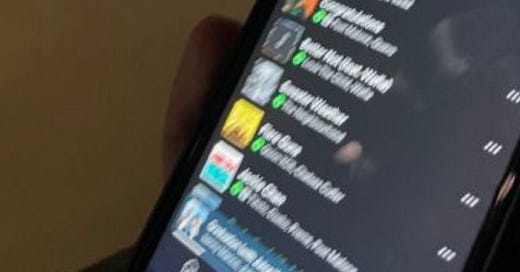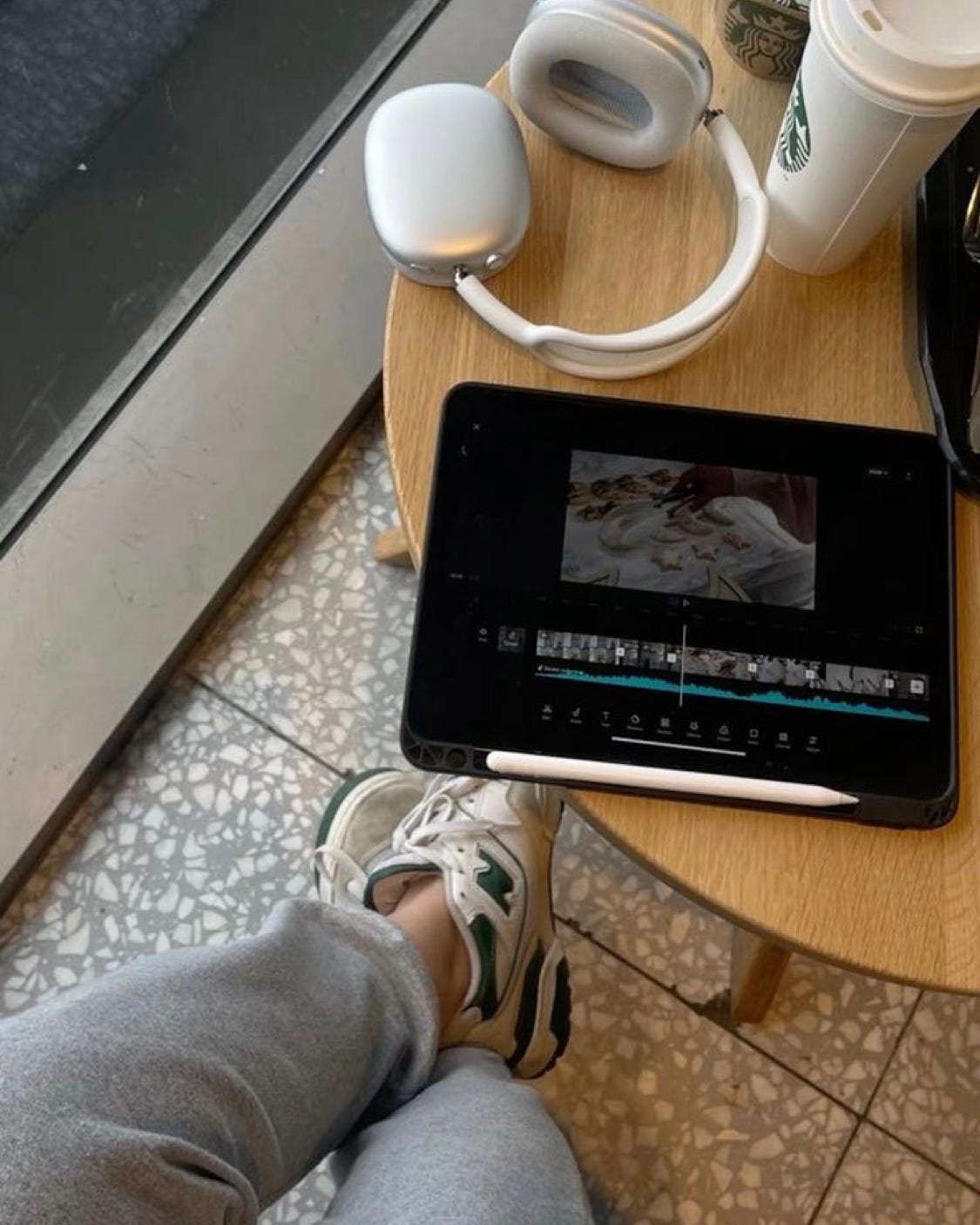Week #4 // Why music curators are the most valuable thing to music since streaming
The music industry permanently shifted in 2020, and curators are to blame.
We are only 7 days out from the Music Curator Guide (join waitlist here), the first published guide on how to build a music curation platform in 2024. This week’s read is going to show you why music curators are so important to the ecosystem of music and how they are changing the industry before our eyes.
The Value of Curation
In chapter 4 of the upcoming Music Curator Guide “The value of curators and their playlists”, I wanted to break down the power of music curation, and how a funnel has been created in tandem between TikTok and Spotify. I’ll try not to nerd out too hard here- but it’s really interesting!
The value of a playlist that is created and promoted via TikTok/Reels is a high powered machine for a lot of reasons, but the biggest in my opinion is the funnel. I always say, a playlist is only as good as the last 500 people who followed it. Why? Retention. Listeners who find a playlist are most likely to listen to that playlist soon after saving it. That’s why you see some gigantic playlists that don’t push any listeners to the songs on it. Why? Because the listeners who saved that playlist have 30 newer playlists above it on their Spotify dashboard and they forgot about it. Something new and hot came along and took it’s place, and It’s very common for this to happen. These big playlists (typically driven by paid Instagram and facebook ads) aren’t driving consistent and quality traffic.
-Music Curator Guide | Chapter 4, page 8
So here it’s clear that playlists are important for Spotify identifying a user’s listening patterns – but not just any users. With the power of TikTok, the users that curators are “finding” are top tier. Why? Because TikTok’s algorithm is the best we’ve ever seen since the dawn of the internet.
(Instagram’s is getting better and better by the week)
So, what have I seen first hand to make me think this? From my playlists generating much more streams than playlists with a far bigger amount of saves (even Spotify editorial playlists). And it’s because my playlists have better listeners 😊. Let me break it down for you:
Think about who those people are who just saved your playlist from a post that gets 100k views. Who are they? Well, thanks to the TikTok and Instagram algorithm, we can bet that those are some high quality listeners of that genre. But why? Let me break it down for you further.
TikTok and Instagram take your video about a certain song within a genre, and if you do it right- they will find fans of that genre scrolling on the app. Of those people who watch my videos, a smaller percentage of people will watch the whole video and see the playlist I screen record and showcase at some point in the video (I do this in every single video without fail and highly suggest you do this). And then, an even smaller percentage will go to my link in bio to find the playlist, or even search it inside Spotify or Apple. And an even SMALLER percentage will open the playlist, listen to it, and save the playlist. You may be asking why less and less people is better? Well what happened during this whole process, is with each level that a person passes through into the funnel from the video to your playlist, is without a doubt showing strong traits of being a true music fan within your video’s niche. And the streaming platforms love that. The four steps it may take to get from the video to a stream can filter out a lot of people who are just mindlessly on the app. And Spotify LOVES this.
-Music Curator Guide | Chapter 4, page 9
I studied how Spotify’s algorithm works and I learned a lot. But simply put- Spotify cares about one thing, and that’s the user’s listening experience. A lot of things effect the quality of that experience, but essentially the number one driver to make a listener happy, is Spotify playing them a song from the algorithm that they enjoy. If they can do that more often than not, then Spotify is doing their job. But they don’t guess– they use other user data and listening history to make a pretty educated guess on you as a listener by comparing you to other people’s data. And some user’s data they like better than others:
Who do you think Spotify likes more: a listener who is constantly listening to music, finding new artists, sharing music with others, saving songs, adding songs to their own playlists, and enjoying a high volume of artists every week -or- a listener who rarely finds new music, listens to mood playlists only but doesn’t save any songs, has the same music constantly in rotation, and opens the app a couple times a week? We can all agree it’s the former. So if you’re an artist, you want the highest quality listeners pressing play on your music. Not only are those the real music fans who will translate to ticket sales, but these listeners will actually help Spotify find artists new fans similar to them. And don’t forget- artists want to be on the playlists where these high quality listeners are populating. Well until short form video took over, there has been no better funnel in the history of music streaming that has allowed for this to happen.
-Music Curator Guide | Chapter 4, page 9
So, this is what Spotify is looking for. High quality fans (listeners) with a lot of data (listening history and activity) to help push music. Connecting these high quality listeners with artists was a long and slow process before music curators became the bridge between the two. Now, in a single day I can have 1, 5, 10 thousand high quality listeners interact with artists on a playlist or featured in a video.
When I started putyouon in 2020, one of the most obvious things was the fact that humans needed help being shown new music in order to grow the music industry. And like I said before, this used to be solely from the Radio (Major Labels), TV (Major Labels), Music Blogs (Major Labels), Spotify Editorial playlists (Major Labels). Just like big brands were the top 1% making 90% of sales in merchandise. But just like how now you can see smaller brands with a creative team make content and take market share from the bigger brands, the same is happening in music. Smaller brands (music curators) can now make content -and playlists- and take market share from bigger brands (major label artists). This is due to the democratization of music consumption, and the opening paragraph in the Music Curator Guide details this perfectly:
One thing is true about the current digital landscape: We have entered a very different world of music. Gone are the days where corporations and major labels are able to tell us, the consumers, what to listen to, who’s hot, and what talent is. What I’m referring to is the democratization of music consumption that the TikTok and Instagram algorithm’s have made possible. This very shift in the industry is why I am writing this guide. I believe time has changed, and we are just beginning down a road that will see the democratization of music consumption disrupt the entire industry. And it already has started to.
What do I mean by the “Democratization” of music consumption” ? Well, what we’re seeing is we the listeners and fans are now - more than ever - able to find amazing music, artists, and movements all by ourselves (kind of). We are able to find artists at any end of the globe and become a fan of their music almost instantly. After all, the best way I can describe TikTok is
“random people, all over the world, making surprisingly good music” - Steve
-Music Curator Guide | Chapter 1, page 4
So in today’s digital age of all of us being bombarded with ads on social media, we are becoming more and more interested in real people showing us products. In last week’s podcast I talked about how Warner Music Group can’t pick up the phone and tell us a story about one of their artists. Universal Music Group isn’t creating a community of music fans and interacting with them every day. Thats why I’m building Putyouon Music Group and want to change the way people think about (record) labels. All of this is working together to provide insight to a new world of music and I think music is going to become a lot more fun in the years to come thanks to more small brands, people, and pages becoming a better and more trusted source for music discovery and enjoyment. I’m so excited about this and I’m working every day on making that come true.
Next week is the big one. The Music Curator Guide is coming out. I didn’t make it free, and the biggest reason is so that people who are serious about music curation will be the ones who get their hands on the guide. Like I said, I want to use it as a honey pot to find serious music curators who I can help. If it were free, that set of people wouldn’t mean as much. Music club members (join here) will get a HEAVY discount on this (of course). Over 120 people are on the waitlist for the guide- so I’m excited to be able to help new and current curators build their platforms- because we are the most valuable thing to happen to music since streaming.
-Steve





